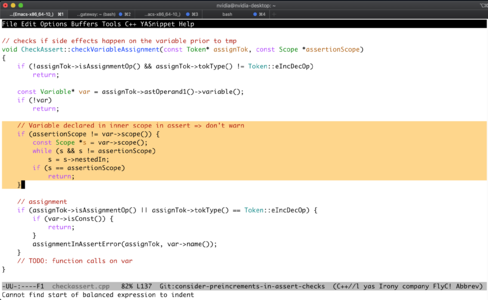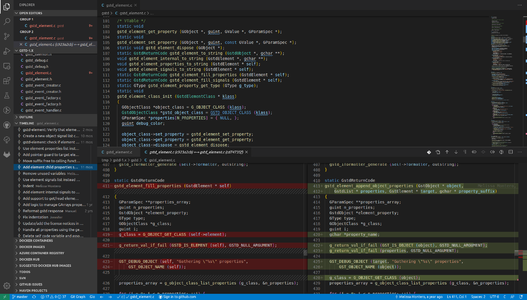RidgeRun Developer Manual/Editors
WORK IN PROGRESS. Please Contact RidgeRun OR email to support@ridgerun.com if you have any questions. |
| RidgeRun Developer Manual |
|---|
 |
| Coding Styles |
| Development Tools |
| Editors |
| Debugging Tools |
| Methodologies |
| Design Patterns |
| Testing |
| Build Systems |
| Contact Us |
Contents
Developer's IDE
The Integrated Development Environment (IDE) is probably the most fundamental tool of a developer. Similar to how a chef invests in a good set of knives or how a surgeon requires precision scalpels, the IDE can make a huge difference in the quality and efficiency of a programmer. Setting up these environments rarely is considered a waste, but an investment. A professional developer understands the importance of working with the right tools.
An IDE is set of tools integrated to make the development process more efficient. These are typically plug-ins, meaning that they may be independently installed, configured or removed by the user. The later allows the developer to customize it's environment according to his/her preferences (programmers are known to be proudly picky :)) Among these, the Code Editor (CE) is the core of the environment. Around it, several plug-ins add extra functionality such as integrations with version control system, debuggers, tests, static code analysis, etc...
Generally speaking, we recommend that every developer is fluent with, at least, two environments:
- Console based Code Editor
- Integrated Development Environmant
Figure 1 shows an example of the two aforementioned environments.
Console Based Editor
A lightweight editor that opens within the terminal emulator. You'd typically use this for quick edits, or momentary remote editing. If a project will require you to remote edit as you primary (or very constantly) consider setting up a remote IDE instead.
Popular console editors include:
IDE Features
Essential Features
- Static Code Analysis
- Code Autocompletion
- Code Navigation
Desired Features
- VCS Integration
- Debugger Integration
- Remote Editing (via SSH)
- Auto-Indenter


